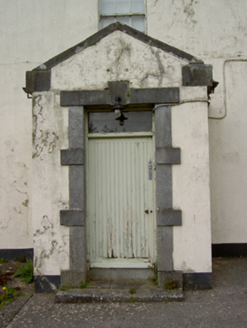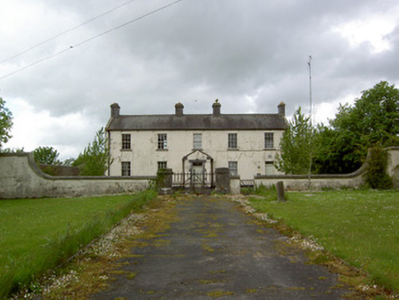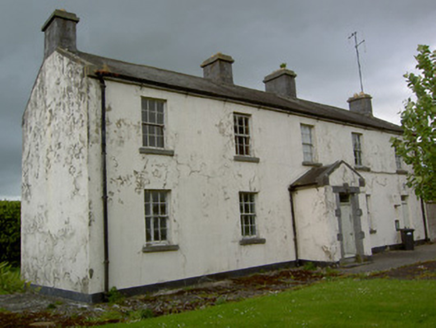Survey Data
Reg No
22206913
Rating
Regional
Categories of Special Interest
Architectural, Social
Previous Name
Newinn Barracks
Original Use
Garda station/constabulary barracks
Date
1780 - 1820
Coordinates
207961, 131934
Date Recorded
18/05/2005
Date Updated
--/--/--
Description
Detached five-bay two-storey former constabulary barracks, built c. 1800, now disused, with projecting gable-fronted porch and having single-storey lean-to extension to much of rear. Pitched slate roof with cut limestone chimneystacks and cast-iron rainwater goods, dressed limestone eaves course and having cut-limestone coping to porch. Painted rendered walls. Square-headed window openings with tooled limestone sills, timber sliding sash six-over-six pane windows, with some replacement timber windows to rear. Square-headed door opening to porch with cut limestone block-and-start surround and limestone threshold, having replacement timber battened door and overlight. Square-headed door opening to north end of front façade with replacement timber battened door. Outbuildings with yard to rear having random rubble limestone walls and segmental arch carriage entrance. Cast-iron water pump with handle to rear of site. Rendered ruled-and-lined boundary wall with rendered coping and tooled limestone piers. Wrought-iron double-leaf and pedestrian gates to entrance. Stone pier to east of site with incised letter 'B' on east and south faces.
Appraisal
This former constabulary barracks served the Royal Irish Constabulary until 1926, after which time it was used by the Garda Síochána. Set back from the street the barrack building, outbuildings, yard, pump and boundary walls form an imposing complex that retains much of its original fabric, form and character. The symmetrical barrack building, with its elegant balanced proportions, exhibits many attractive features and materials including a fine cut limestone entrance porch and timber sliding sash windows. Historically the building is associated with a murder investigation in the early 1940s in which a local man was tried, condemned and executed, the story retold in the book "Murder at Marlhill" by Marcus Bourke.





